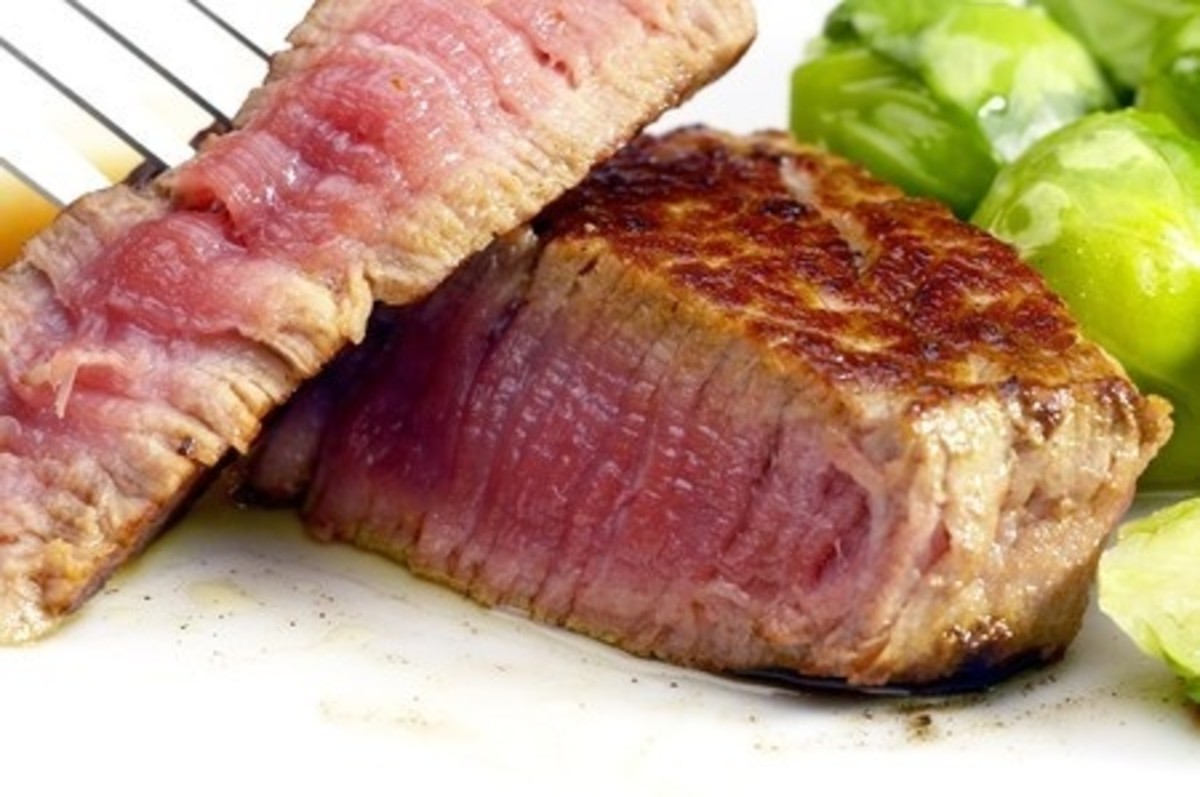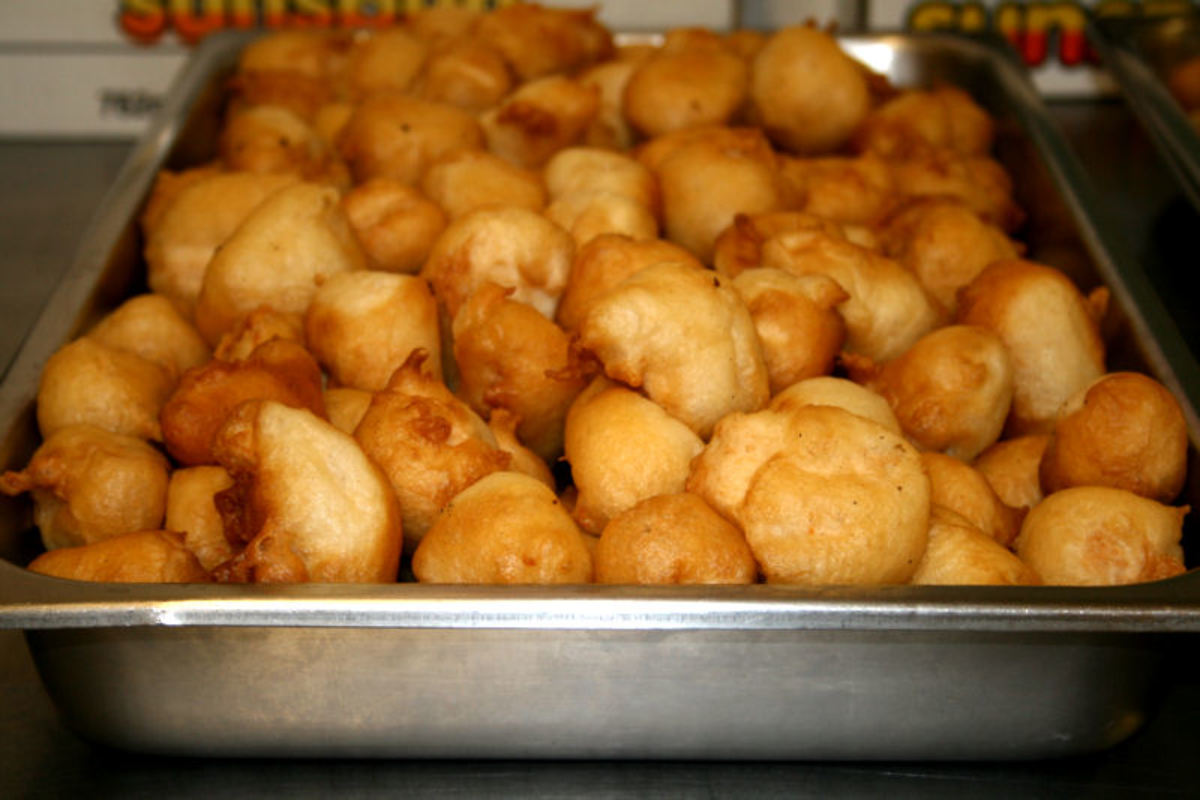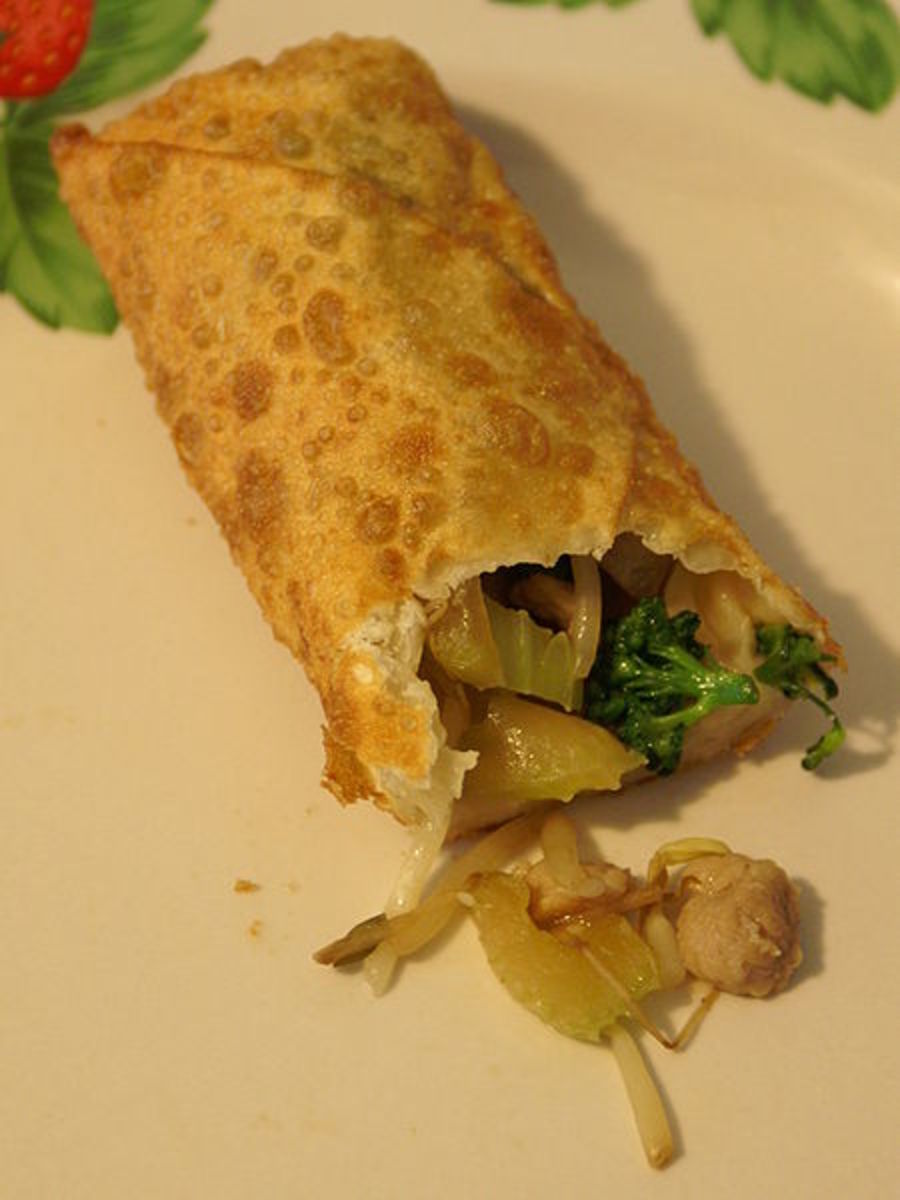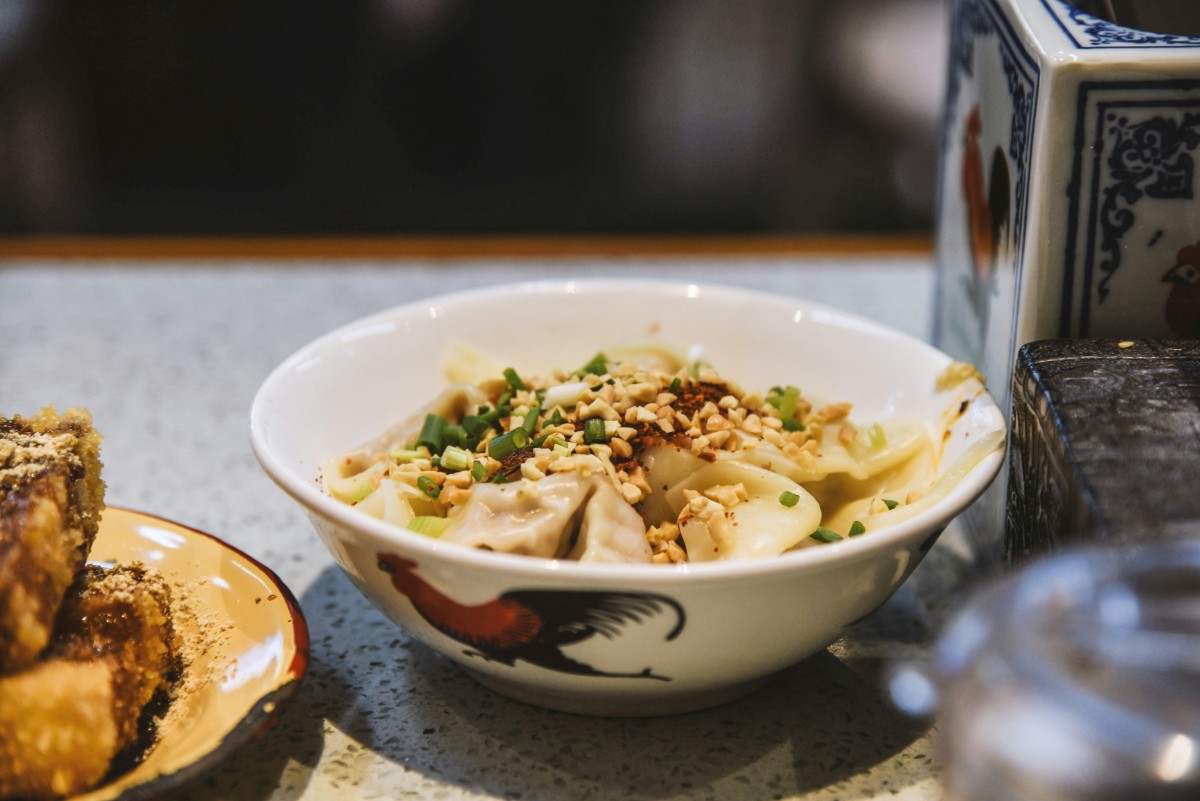- HubPages»
- Food and Cooking»
- World Cuisines»
- East Asian Cuisine
Eating out in China: The Highs and Lows
To Go Or Not To Go
Before travelling to China (or moving to China), one should dedicate some moments for investigating the eastern mystique. Whether it be a concern about the language barrier or trying to travel the vast country prudently with a short vacation. Similarly, a distress about the weather will arise (almost nowhere has perfect weather year-round) and frets related to public transport will haunt pre-holiday nightmares. To visitors and expats both, though, one feature stands out when living in China: the food. Today I introduce my experience of restaurants in China and prompt you to try a delight I found during my time living in China.
First, I introduce to you, street food. Juice, fruit, light snacks, sweet excitements through to gargantuan day-fulfilling meals. There are many horror stories to be found online most likely encouraging you to avoid street food at all costs. To some extent, I do agree with this but you must try the dishes and delicacies on offer regardless. Go for it. You’ll have a stronger digestive system for it. For example; baozi (a kind of steamed bread with vegetable, meat or sweet fillings); rou jia mo (a hamburger of sorts with shredded meat between a soft yet chewy thin bread); or last but not least chuan’r (basically meat – unidentified meat – on a stick then barbequed).
Below is an intriguing video showing some of these delectable morsels awaiting your try.
Street Food
China Poll
Have you been to China?
Restaurants
Second, restaurants. You can go to many high-end restaurants yet these serve no purpose other than to rid you of your holiday cash, fast. Instead, I recommend trying the many family-run restaurants streaming any Chinese city sidewalk. I do, nevertheless, warn you, that my use of ‘family-run’ should certainly not conjure images in your imagination of what family run means in Britain or America. On the contrary, home-run here simply means making a living. The managers care not for your pleasure or satisfaction, or to provide you with a tender and friendly environment, rather follow a terribly simple equation. Thus: enter; sit; order food; spicy or not spicy; cook; eat; pay (and you must whether happy or not); leave.
What else could I concern you with? Well? A lot. When I first moved to China, I was eating out often (too often – I knew this because of the terrible laduzi (diarrhoea) I was experiencing induced by the lack of hygiene standards taken for granted in the West) because of the enthusiasm and eagerness to try everything of what was on offer. Once I had settled in I reduced such follies to the ‘outside’ preferring to cook at home, inspired what I had learned in from Chinese cuisine. So you should, bring your stomach medicine.
A Restaurant Come Street Vendor - Commonplace Across China
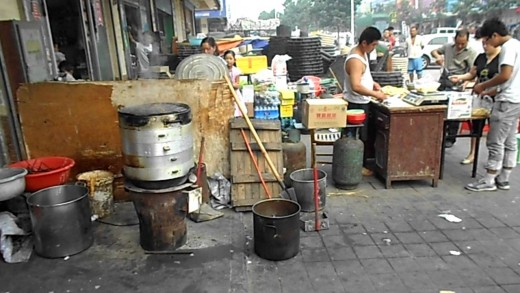
My Experience
There are exceptions to this description. But I do believe, from my experience, the above is the rule. However, as I mentioned, I do appreciate many ideas learned and have consequently welcomed them into my own home cooking. Quite, what follows is an anecdote leading to my discovery of a now loved ingredient of mine.
During the occasions of eating out, I noticed a small black bean in many of the dishes. Whenever the bean was present in a dish, there was a particular flavour, a deep fermented aroma I particularly relished consuming. Without going into too much detail, I asked a colleague (with whom I was eating at a restaurant) what the black bean was. She informed me it was a common sauce, something normal, boring and most definitely common to Chinese cooking. The name, she said, is Lao Gan Ma, or ‘Old Dry Mother’. On my next day off, I braced myself for a search of the supermarket, on a quest to find this black bean.
A Reference to my Usage
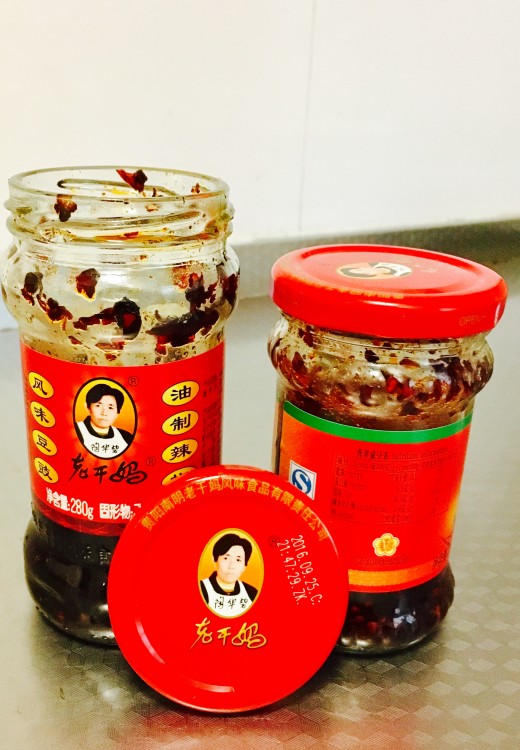
A Lucky Find...
The lusciously thick, almost molasses like, oil is what you’ll first notice on opening. Following this, you’ll have the burst of deeply scented fermentation of black beans. To reach the bottom of the jar with either a fork or spoon, a little elbow grease is required, not least because the storage causes the majority of ingredients (bar oil) to fix at the base. In time, the beans and dry chilli will amalgamate with the oil – become an inviting one - awaiting your ingestion. The mention of chilli shouldn’t scare you away.
On the contrary, this is not a spicy sauce. Well, it has a warming taste, salty and encasing. Perfect that it is often eaten alone with plain bread. Or if you dare, with raw leek! Bare with, though, as there are many ways to eat this intriguing sauce. I don’t mean to try to sell this sauce/condiment to you rather convey you how important this was to my first few months in China. It was ever present in the restaurants and now in my home.
So why do I want to introduce this sauce to you today? I offer to you a sauce so versatile it can be added to meat, vegetables or carbohydrates for an instant volume increasing taste sensation. You could add directly into stir fries or adorn a simple bowl of boiled rice with the ruby red, molten lava like, condiment. Or I offer to you another fantastic, almost revolutionary – indeed a means of integrating culinary cultures – way to use this sauce: use it in your beloved hummus recipe. You won’t regret it!
Celery and Mushroom Fried with Lao Gan Ma
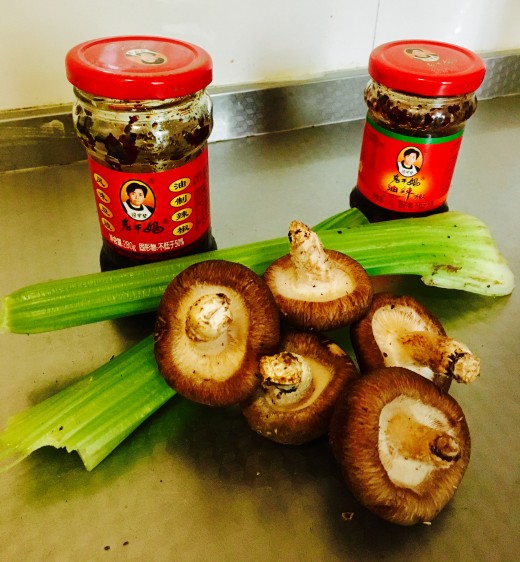
A Recipe of Sorts
I propose now, however, a simple dish, inspired by my entrances to many a Chinese family-run restaurant. I do, nevertheless, warn you, that my use of ‘family-run’ should certainly not conjure images in your imagination of what family run means in Britain or America. On the contrary, home-run here simply means making a living. The managers care not for your enjoyment or satisfaction, or to provide you with a warm and loving environment, rather follow a terribly simple formula. Thus: enter; sit; order food; spicy or not spicy; cook; eat; pay (and you must whether happy or not); leave.
I ramble. The ingredients you require for, say, two people:
- Celery (about 2 stalks)
- Shitake mushrooms (about 5); any mushroom will do just not the plain white affair
- ½ teaspoon salt (or less if you're worried about the amount already in the sauce)
- ½ pepper (black or white)
- 1 Birdseye chilli (you know, the small, tremendously spicy one) – omit if you like
- 1 tablespoon oil (of your choice)
- 1 whopping tablespoon of Old Dry Mother.
The cooking process is very easy.
- Chop the celery and mushroom – the suggestion is for similarly sized pieces but be as you will
- Heat the pan and add the oil
- Once the oil is hot, add the celery and mushrooms – stir-fry until tender
- Add the salt, pepper and chilli (if you wish)
- Cook for 30 seconds
- Stir in the Lao Gan Ma
- Cook for 30 more seconds
- FINISHED! Service with carbohydrate of your choice.
My Creation
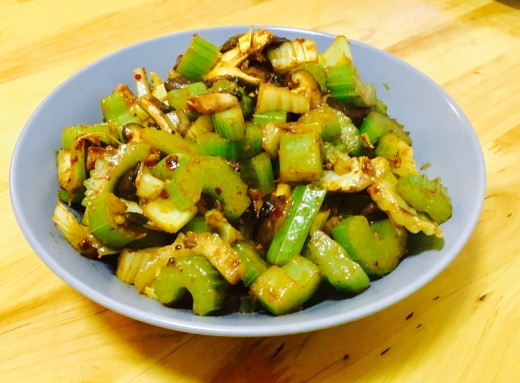
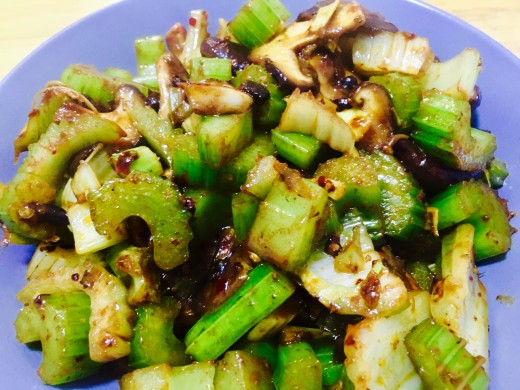
Now wasn’t that easy? I have to say, though, this dish is missing an ingredient you can add but I know little about, meat. In most Chinese dishes one will find slathers of unidentified meat: pork, chicken, mutton… I shan’t note any unpalatable to us at home. You can, of course, add meat to facilitate your desires. That said, do try this dish. Bathe these vegetables (or any other combination) in the sauce of a cult. Start your worship of the Old Dry Mother today.
An Ending
There is something about new experiences – that jolt of excitement – that wears off as time goes by. Indeed, you start to take your environment for granted. I guess this has happened to me when it comes to the street food and restaurants I speak of above. Although I took away something special. A story, as shared with you, I won’t forget. The simplicity of a bean has become part of my life (dramatic, I know). I was only able to find this, though, because of my ability to take myself out of my comfort zone; to try something new. So if you’re thinking about visiting China or even moving here for work – go on, try it! You’ll be amazed at what’s waiting for you.
See you.


